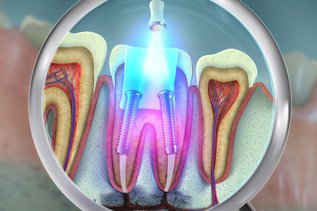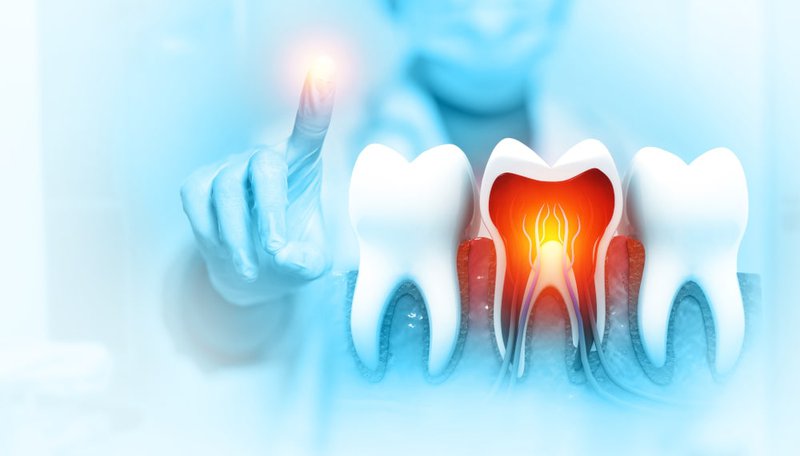
Root Canal Therapy: Myths vs Reality
Key Takeaways
- Root canal therapy is safe, effective, and often painless. Thanks to modern anesthesia and advanced techniques, most patients experience minimal discomfort, comparable to getting a dental filling.
- The procedure helps save natural teeth and prevent further complications. Root canals eliminate infection, preserve tooth structure, and restore oral health.
- Myths about root canals causing illness or chronic disease have been scientifically debunked. Leading dental associations confirm there’s no link between root canals and systemic health issues.
- Symptoms like persistent toothache, sensitivity, or swelling could signal the need for a root canal. However, some infections are symptom-free and only visible through diagnostic imaging.
- Alternatives like tooth extraction or implants exist, but they’re not always the best option. Preserving your natural tooth usually leads to better long-term function and aesthetics.
- Root canals have a high success rate, often exceeding 90%. With proper care and restoration (like a crown), treated teeth can last a lifetime.
- Preventive care is key. Brushing, flossing, regular checkups, and early cavity treatment can significantly reduce the risk of needing root canal therapy.
- Don't let fear delay treatment. Delaying care for an infected tooth can lead to severe pain, abscesses, or even systemic infection.
What is root canal treatment, and how does it work?
If you've ever had a toothache that felt like it was pulsing into your jaw or temple, chances are it involved the pulp. The pulp is the soft tissue inside your tooth that contains nerves, blood vessels, and connective tissue. When it gets infected — due to deep decay, trauma, or cracks — a root canal treatment is often the best way to save the tooth and eliminate pain.
Understanding Tooth Anatomy and the Role of the Pulp
Each tooth has several layers:
- Enamel: The hard, outer shell.
- Dentin: The porous layer beneath the enamel.
- Pulp: The innermost part, housing nerves and blood vessels.
The pulp is crucial during tooth development, but once a tooth is mature, it can survive without it. That's why removing infected pulp through root canal therapy doesn’t weaken the tooth it strengthens it when followed with proper restoration.
What Happens When the Pulp Gets Infected?
Infection typically sets in when bacteria enter the pulp chamber due to cavities, trauma, or repeated dental procedures. Symptoms include:
- Persistent toothache
- Sensitivity to hot or cold
- Swelling or tenderness in nearby gums
- Darkening of the tooth
If untreated, the infection can spread to surrounding bone and tissues, possibly leading to abscesses or even systemic infection.
Step-by-Step: How Root Canal Treatment Works
- Diagnosis and Imaging: X-rays help assess the extent of damage and inflammation.
- Local Anesthesia: The area is numbed to ensure a pain-free experience.
- Access Opening: A small hole is drilled into the tooth to access the pulp.
- Cleaning and Shaping: Infected tissue is removed using specialized instruments. The canals are cleaned and shaped.
- Disinfection: The canal system is disinfected to eliminate any remaining bacteria.
- Filling: The canals are filled with a rubber-like material (gutta-percha) to seal them.
- Restoration: A crown or filling is placed to protect and restore the tooth’s structure.
This entire process may take one or more visits, depending on the complexity.
"Root canal treatment is one of the most predictable and successful procedures in modern dentistry. It not only relieves pain but also preserves your natural smile." — Dr. James C.H. Ko, DDS, North York Smile Centre.
What are the most common myths about root canals?
Root canal therapy has long been surrounded by myths — some of which are not just outdated but dangerously misleading. Let’s set the record straight.
Myth vs. Fact Table
| Myth | Fact |
|---|---|
| Root canals are incredibly painful | Modern techniques and anesthesia make it nearly painless |
| Root canals cause illness or cancer | Disproven by multiple scientific studies and dental associations |
| Extraction is better than a root canal | Keeping your natural tooth is almost always the better long-term choice |
| Root canals don’t last long | With proper care, they can last a lifetime |
| You only need a root canal if you have pain | Some infections are asymptomatic and found only via imaging |
| Root canal-treated teeth always need crowns | Not always — depends on the location and extent of the damage |
Top Myths Debunked
- “Root canals hurt.”
This myth likely comes from the pre-anesthesia era. Today’s local anesthetics are so effective that patients often say the procedure is no more uncomfortable than getting a filling. - “They cause systemic disease.”
This claim traces back to poorly interpreted 1920s research. Modern science has thoroughly debunked any link between root canals and chronic illness. The American Association of Endodontists affirms this. - “It’s better just to pull the tooth.”
Not true. Extraction can lead to shifting teeth, bone loss, and bite problems. Saving the natural tooth maintains both function and aesthetics. - “If it doesn’t hurt, it’s fine.”
An infected tooth can remain pain-free for weeks or months while still causing damage below the surface. - “Crowns are always required.”
Posterior teeth (molars) often do need crowns due to chewing forces. But anterior teeth sometimes function well with just a filling.
“Patients come in terrified due to these myths. Once they experience the actual treatment, they’re often shocked at how painless and straightforward it is.” — Dr. Mitchell Dzaldov.
Are root canals painful, or is that a myth?
Let’s face it — pain is the number one fear that keeps people from seeing their dentist. But when it comes to root canal treatment, most people are holding on to myths that simply don’t hold up anymore.
How Much Does It Hurt?
With today’s anesthetics, most patients feel absolutely nothing during the procedure. Many report it’s no more uncomfortable than getting a standard dental filling.
Pain Breakdown:
- During Treatment: Minimal to none due to anesthesia.
- Post-Treatment: Mild discomfort or tenderness for 1–3 days. Over-the-counter medication is usually sufficient.
- Long-Term: Once healed, the tooth no longer has nerve tissue, meaning no future pain from that tooth.
Why the Myth Persists
Part of the problem is the horror stories — often outdated or exaggerated. Before modern anesthetics and rotary instruments, root canals were more invasive and took longer. Today, they're faster, safer, and far more comfortable.
What the Experts Say
“Modern endodontics is nearly painless. We use precision tools and digital imaging to ensure accuracy and comfort throughout.” — Dr. Jacklyn Pivovarov
Techniques That Reduce Pain Even More
- Computer-assisted anesthesia delivery systems
- Laser-assisted cleaning of canals
- Single-visit endodontics
- Pre-procedural anti-inflammatories
What's the takeaway? A root canal isn’t something to fear — it’s something to appreciate for its ability to stop pain, save your tooth, and protect your health.

When is a root canal necessary, and how is it diagnosed?
Some dental problems are subtle, others scream for attention. When it comes to root canal treatment, early diagnosis can be the difference between saving a tooth and losing it.
Key Symptoms to Watch For
- Persistent, throbbing toothache
- Prolonged sensitivity to hot or cold
- Discoloration or darkening of the tooth
- Tenderness or swelling in nearby gums
- A pimple or bump on the gums that doesn’t heal
Not all infections come with pain, which is why regular dental exams and X-rays are critical.
Diagnostic Tools and Tests
- X-Rays: The most reliable method to detect periapical abscesses, decay near the pulp, or bone loss.
- Cold Test: A puff of cold air or ethyl chloride is applied to assess nerve responsiveness.
- Percussion Test: Tapping the tooth gently with a dental tool helps identify inflammation in the periodontal ligament.
- Electric Pulp Test: Sends a mild electrical current to check if the pulp is alive.
- Thermal Testing: Used when pulp vitality needs to be evaluated more precisely.
Diagnostic Criteria
A root canal is typically indicated if:
- The pulp is irreversibly inflamed (pulpitis)
- There's visible decay into the pulp chamber.
- Radiographs show bone loss or an abscess
- The tooth responds abnormally to thermal or electrical stimulation.
Root Canal vs. Filling
| Criteria | Filling | Root Canal |
|---|---|---|
| Extent of Decay | Limited to enamel/dentin | Reached pulp or root tip |
| Pain Level | Mild to none | Moderate to severe |
| Procedure Duration | 30–60 minutes | 60–120+ minutes (may need 2 visits) |
| Tooth Vitality | Maintained | Removed (non-vital tooth) |
| Restoration Needed | Filling only | Usually requires crown post-treatment |
What causes someone to need a root canal in the first place?
The root of the problem (pun intended) usually begins with bacterial invasion. But there’s more than one route to get there.
Common Causes
- Deep Tooth Decay: Bacteria penetrate enamel and dentin, reaching the pulp.
- Dental Trauma: A fall, accident, or sports injury can crack the tooth or damage the nerve.
- Multiple Dental Procedures: Repeated drilling or restoration can irritate the pulp.
- Failed Fillings or Crowns: Poorly sealed restorations allow bacteria to seep in.
- Cracks and Fractures: Even microscopic cracks can let in microbes.
Supporting Research
In the study “Microbial flora associated with endodontic infections” (Sundqvist, G.), researchers confirmed that polymicrobial anaerobic bacteria are the main culprits in infected root canals.

Are root canals safe, or do they pose any danger?
You might’ve heard the conspiracy theories: root canals are toxic, they cause cancer, or they harbour ‘deadly bacteria.’ Let’s unpack this.
Biocompatibility and Infection Control
Modern root canal materials — like gutta-percha — are biocompatible, meaning they integrate well with human tissue and don’t trigger immune responses. Procedures are conducted under sterile conditions with rubber dams and disinfecting agents to ensure maximum hygiene.
Debunking the Weston Price Myth
Dr. Weston Price's early 20th-century research suggested that root canals cause systemic disease. But:
- His studies were based on flawed methods (e.g., burying infected teeth in rabbits)
- He lacked controls, peer review, and modern sterilization standards.
- Multiple follow-up studies have failed to replicate his result.s
So, Are They Dangerous?
Not at all. When performed under today’s standards, root canal treatments are:
- Sterile and Safe: Conducted in controlled environments
- Effective: High success rate (up to 95%) when done properly
- Preventive: Stops infection from spreading to other areas of the body.
What’s the final word? The real danger isn’t the treatment — it’s ignoring the problem.
What are the long-term side effects of a root canal?
Root canals are highly successful, but like any procedure, they’re not without risks. The key is understanding what’s typical, what’s rare, and what you can do to reduce complications.
Potential Long-Term Effects
- Tooth Brittleness: Once the pulp is removed, the tooth no longer has a blood supply. Over time, this can make it more prone to fractures.
- Reinfection: If canals aren't thoroughly cleaned or sealed, bacteria may persist, leading to reinfection.
- Need for Retreatment or Surgery: A small percentage of root canals fail and require apicoectomy or a second root canal.
Alternatives and Their Risks
| Treatment | Pros | Cons |
|---|---|---|
| Root Canal | Preserves natural tooth, pain relief | May need a crown, rare failure |
| Extraction + Bridge | Good for non-restorable teeth | Adjacent teeth are reshaped |
| Extraction + Implant | Long-lasting, independent support | More costly, surgical procedure |
| Pulpotomy (partial root canal) | Sometimes effective in young patients | Temporary, not viable for deep infections |
Are there alternatives to root canal therapy worth considering?
Yes — and in certain situations, they may even be preferable. But they’re not always equal in outcome.
Viable Alternatives
- Pulpotomy: Removes part of the pulp, usually in baby teeth or as a temporary fix.
- Tooth Extraction + Dental Bridge: Used when the tooth is non-restorable, but can stress neighbouring teeth.
- Tooth Extraction + Implant: Highly durable and independent, ideal when there's significant structural damage.
When to Consider Alternatives
- Structural damage is too severe for a root canal.
- The previous root canal has failed more than once.
- The patient prefers extraction over retreatment.

How do root canals affect overall health, if at all?
Let’s get this straight: Root canals do not poison your body or weaken your immune system.
H3: Clarifying the Misconceptions
The fear that a "dead tooth" spreads infection stems from pre-antibiotic, pre-sterile technique days. Today’s root canals involve total decontamination, disinfection, and sealing to prevent systemic exposure.
So, are root canals harmful to your overall health? Not. Leaving an infected tooth untreated poses a much greater risk.
How can you prevent needing a root canal in the future?
Most root canals are avoidable. That might surprise you, but prevention isn't just possible — it's practical. You just have to be consistent.
Step-by-Step Prevention Guide
- Brush Twice a Day — Use a fluoride toothpaste and brush for a full two minutes.
- Floss Daily — This removes food particles and bacteria that brushing misses.
- Use Antibacterial Mouthwash — Especially if you're prone to decay or gum issues.
- Visit Your Dentist Every 6 Months — Professional cleanings and early detection are critical.
- Limit Sugary and Acidic Foods — Sugar feeds decay-causing bacteria; acid weakens enamel.
- Hydrate — Drinking water helps wash away food and maintain saliva flow.
- Use a Mouthguard for Sports — Dental trauma is a top reason for emergency root canals.
- Treat Small Cavities Promptly — Delaying treatment gives bacteria time to reach the pulp.
A study published in the International Journal of Dentistry (2022) found that people who flossed daily and attended regular checkups had a 70% lower risk of needing root canal therapy than those who did not.
What should you believe about root canal treatment?
After all the myths, data, and expert opinions, what's the bottom line?
Root Canal Myths vs. Reality
| Claim | Reality |
|---|---|
| Root canals are painful | Modern anesthesia makes them virtually painless |
| They cause chronic disease | Debunked by decades of scientific research |
| Extraction is always better | Keeping your tooth is almost always the healthier long-term option |
| Root canals fail frequently | Over 90% success rate with proper care |
| They weaken the tooth permanently | Crowns restore full function and strength |
Authoritative Sources Cited
- Canadian Dental Association
- American Dental Association
- American Association of Endodontists
- Journal of Endodontics, 2023 Edition
- International Journal of Dentistry, 2022 Study on Oral Hygiene & Root Canal Risk
- Mayo Clinic - Root Canal Alternatives
In short, a root canal is not something to fear — it's a tool that preserves both your health and your smile.

